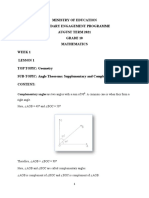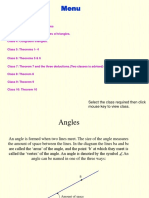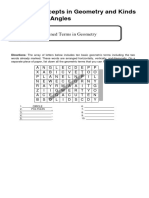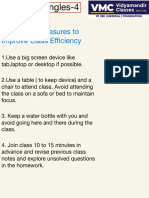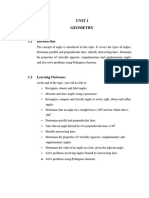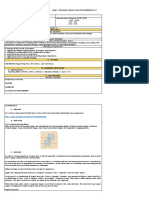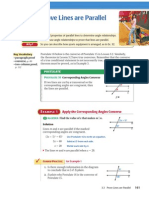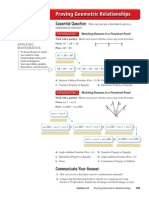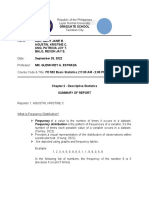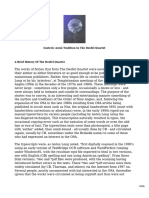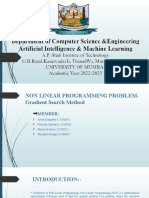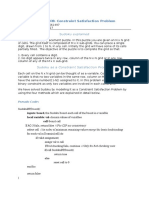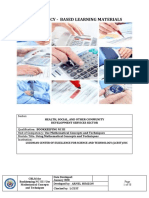0% found this document useful (0 votes)
18 views2 pagesClass 1 Notes Geometry
The class focused on understanding angles, parallel lines, and the process of writing mathematical proofs. Key concepts included the definition of axioms, the measure of angles, and the vertical angles theorem, culminating in the alternating angle theorem. Students were encouraged to practice problems and utilize resources for further assistance.
Uploaded by
29mt0001Copyright
© © All Rights Reserved
We take content rights seriously. If you suspect this is your content, claim it here.
Available Formats
Download as PDF, TXT or read online on Scribd
0% found this document useful (0 votes)
18 views2 pagesClass 1 Notes Geometry
The class focused on understanding angles, parallel lines, and the process of writing mathematical proofs. Key concepts included the definition of axioms, the measure of angles, and the vertical angles theorem, culminating in the alternating angle theorem. Students were encouraged to practice problems and utilize resources for further assistance.
Uploaded by
29mt0001Copyright
© © All Rights Reserved
We take content rights seriously. If you suspect this is your content, claim it here.
Available Formats
Download as PDF, TXT or read online on Scribd
/ 2














